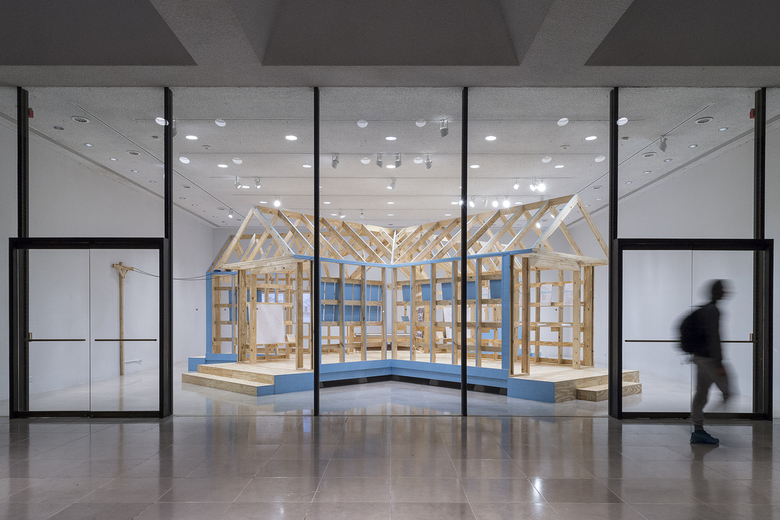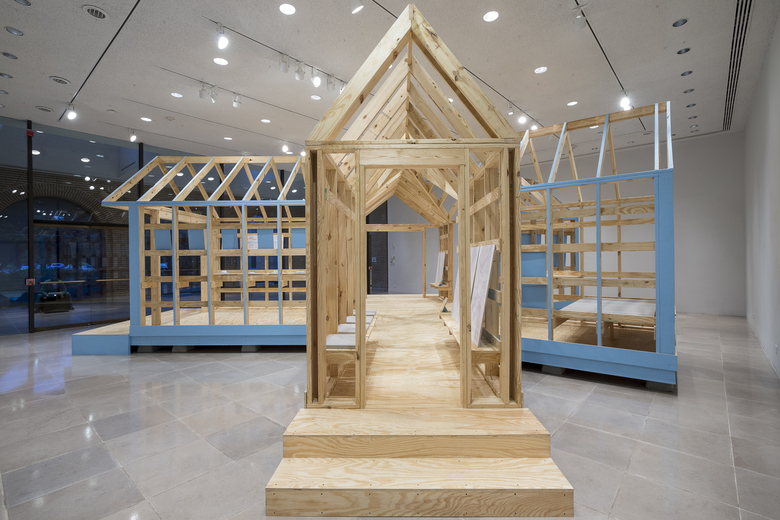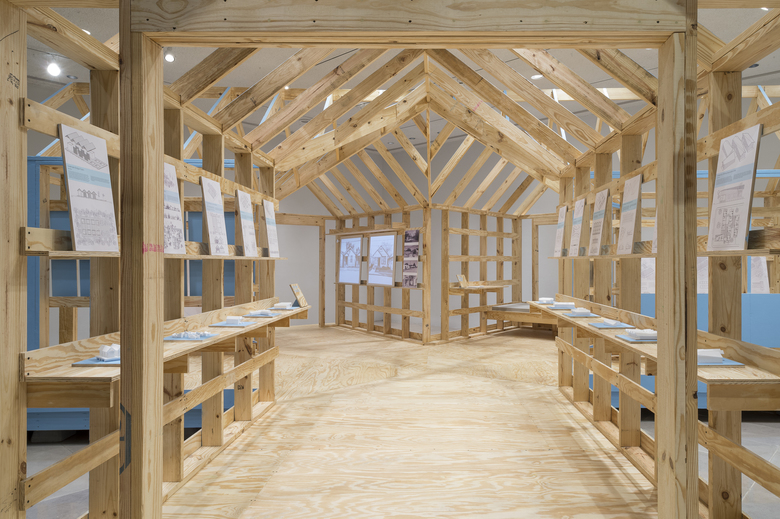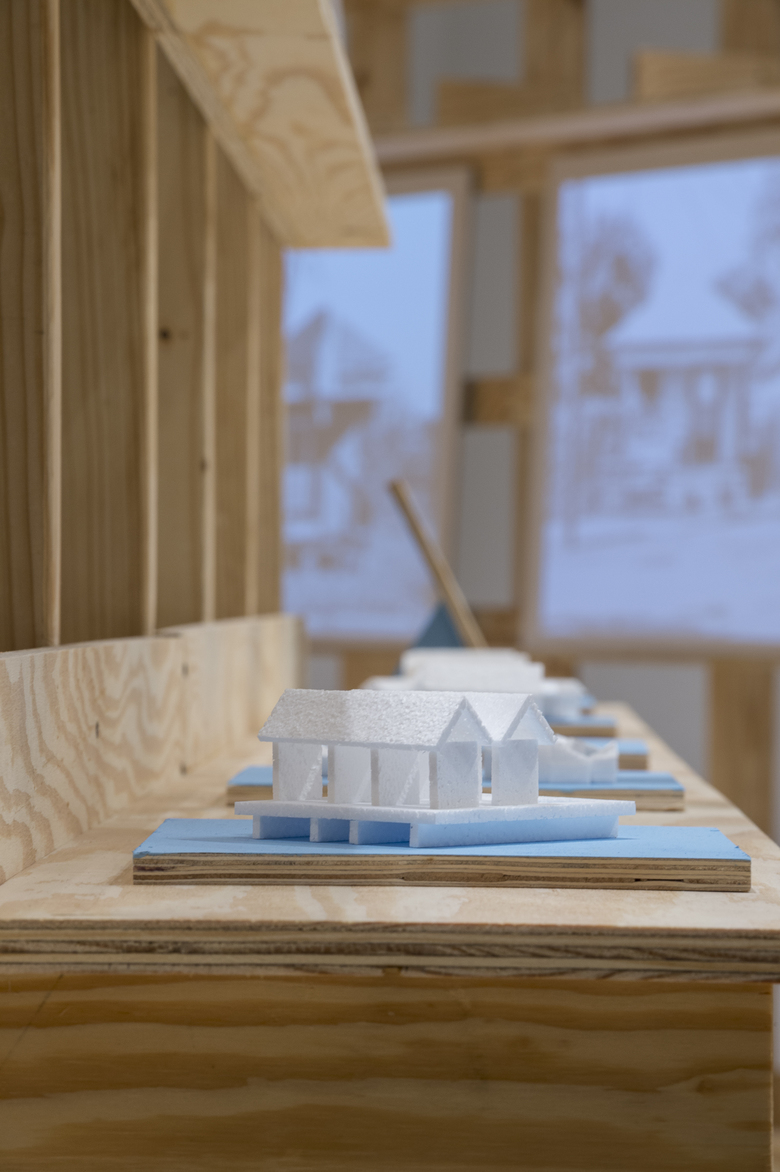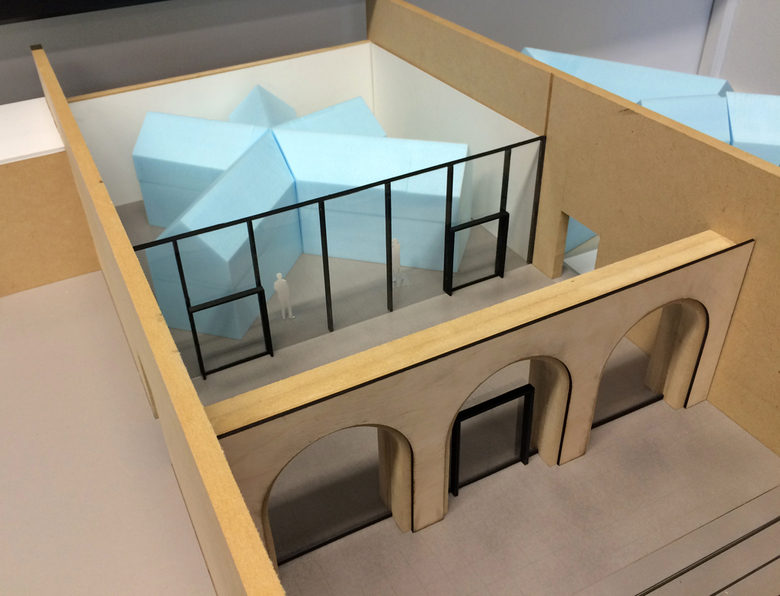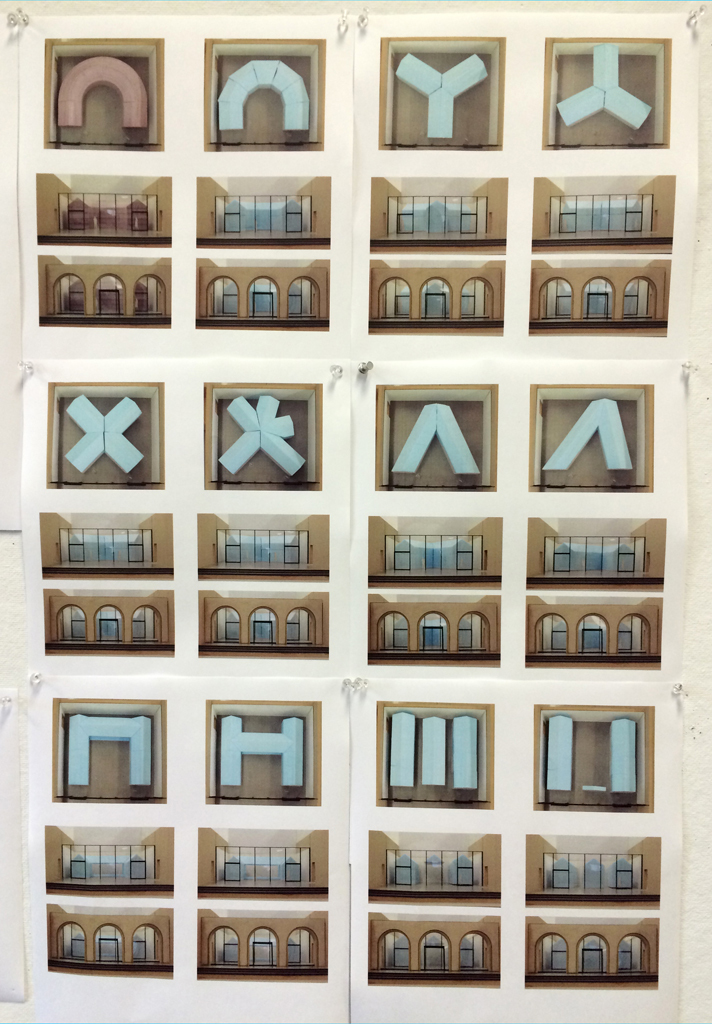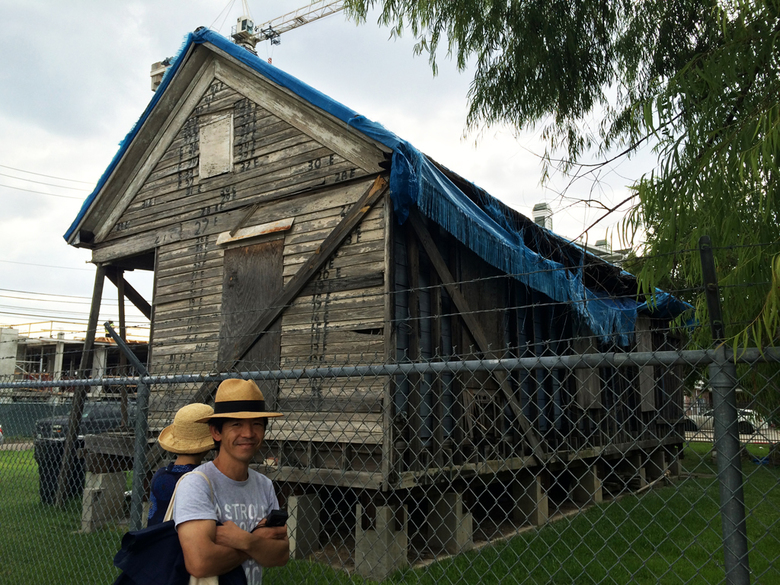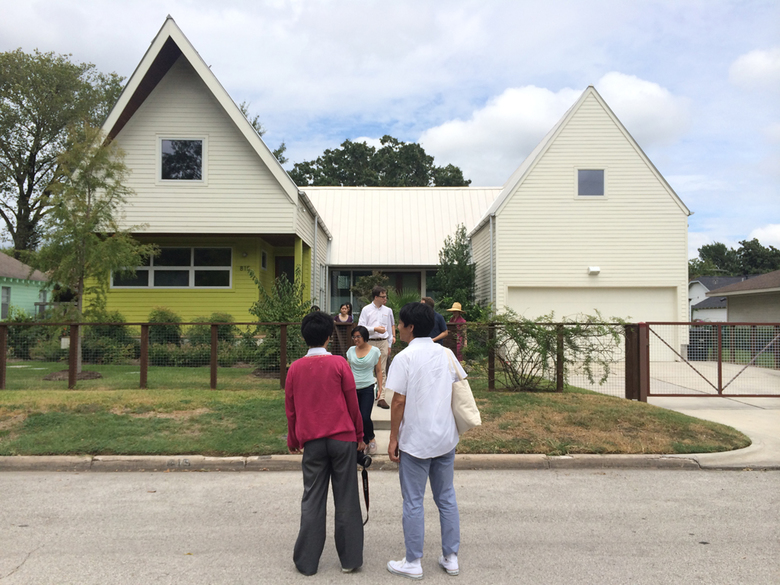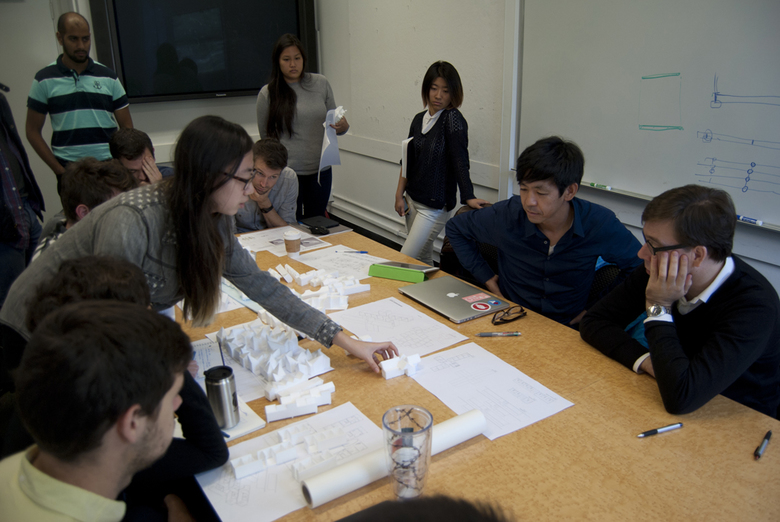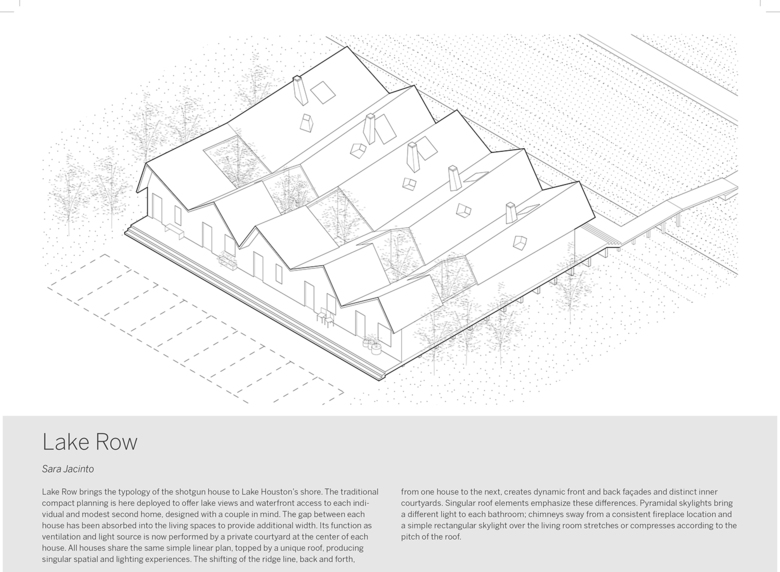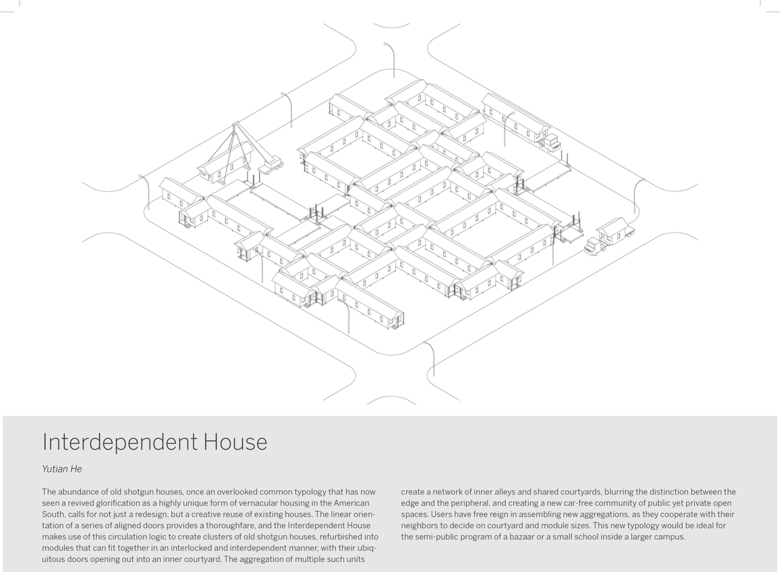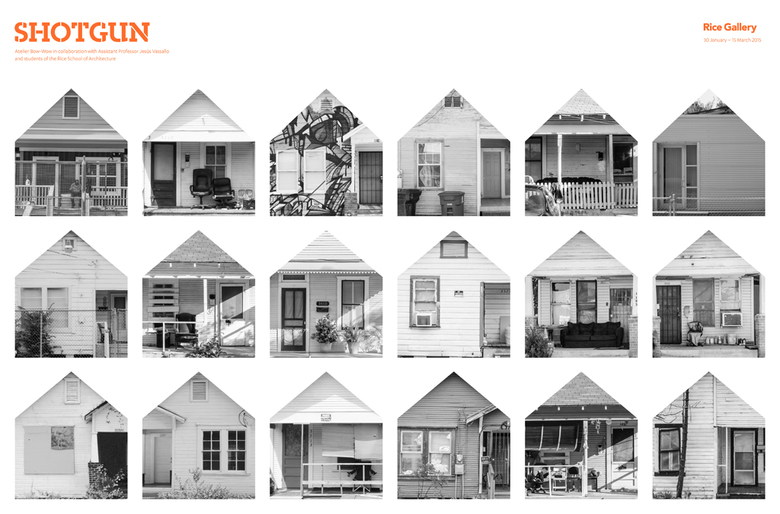Learning from Houston's Shotgun Houses
John Hill
16. February 2015
Photo: Nash Baker © nashbaker.com (All photographs courtesy of Rice University)
Atelier Bow-Wow, Rice University professor Jesús Vassallo and students from Rice School of Architecture recently completed the "Learning from Houston" study of the city's vernacular shotgun houses, culminating in an exhibition in the university's art gallery.
Atelier Bow-Wow's (AB-W) appreciation of vernacular and small-scale buildings is well known. One of Yoshiharu Tsukamoto and Momoyo Kaijima's most famous productions is the Pet Architecture Guide Book, which presents buildings in Tokyo that have squeezed themselves into otherwise unbuildable leftover spaces. So it's no wonder that the duo accepted Vassallo's proposal, following a lecture they gave at Rice University in 2013, of tackling a seminar at Rice focused on the shotgun house. Over the course of the fall 2014 semester, Vassallo and AB-W led students' investigations into the history, construction and urbanism of the residential typology followed by design proposals of how shotgun houses could be realized today, more than 50 years after they were supplanted by other forms of housing.
Photo: Nash Baker © nashbaker.com
Photo: Nash Baker © nashbaker.com
Traditional shotguns are basically long, single-story volumes with pitched roofs and corridor-like layouts that allow a clear "shot" from front to back. In relation to AB-W's previous studies, shotguns can be seen as horizontal versions of the stacked single-family houses on small Tokyo lots, such as their own house and studio. This, combined with the duo's interest in the relationship between wood construction and forestry, can be seen in the final form of the exhibition – Atelier Bow-Wow + Jesús Vassallo + Students of the Rice School of Architecture | Shotgun – which was designed and executed with Vassallo and some of his students yet recalls AB-W projects like the Saiko House. The wood framing alludes to the simple structure of a shotgun, as does the gable form, but the five-prong plan turns it into something oddly different, with each leg corresponding to the four types of research and to the design proposals.
Photo: Nash Baker © nashbaker.com
Model of exhibition in Rice University Art Gallery
Vassallo told me that the installation at the Rice University Art Gallery serves as a metaphor for how the shotgun houses were analyzed, dissected and then reassembled in the gallery space. The asterisk is the final abstracted form of the "gallery within a gallery," but other plans were explored, including U-shapes, Y-shapes, H-shapes and even more traditional parallel groupings. The last echoes the distribution of shotgun houses in Houston. Though hardly limited to Houston historically (many shotguns can be found in New Orleans and other areas of the U.S. South), shotgun houses were prevalent in the city's third and fifth wards, where they were clustered in developments and where much of the research was centered.
Alternative layouts for exhibition in Rice University Art Gallery
Visiting Houston's traditional shotgun houses
To take on the research of the deceptively simple housing form, the twenty students* worked in four smaller groups that studied different aspects of the shotgun houses. One of these groups researched the social, economic and environmental factors at play; another group surveyed the houses in the third and fifth wards through photography and mapping; another group traced the genealogy of the shotgun as it changed over time; and the fourth group focused on vernacular construction and the materials used to build the homes. These four research areas, which comprise most of the materials on display in the gallery, informed the subsequent design proposals that are fairly schematic but address the different ways that shotgun houses could serve contemporary conditions.
Some architects in Houston have attempted to adapt and update the shotgun typology; pictured house designed by Brett Zamore.
Yoshiharu Tsukamoto and Vassallo (right) with seminar students
The proposals (a couple are excerpted below) are as much about social conditions as they are about form. As Vassallo explained to me, the students were asked, "What conditions would make the typology feasible again?" Some students responded with housing for the elderly, while others considered the form suitable for students, like themselves. Still others proposed shotgun row houses as smaller, second homes, and groupings that create courtyards ideal for schools or community centers. The variety of proposals points to the flexibility of the shotgun typology and the potential that can be found within a form that has plenty to teach.
*Students in Atelier Bow-Wow and Jesús Vassallo's "Learning from Houston" seminar:
Atelier Bow-Wow + Jesús Vassallo + Students of the Rice School of Architecture | Shotgun is on display in the Rice University Art Gallery until 17 May 2015.
Vassallo (center) and the students working on the Shotgun installation in the Rice Universit Art Gallery
Shotgun exhibition poster designed by Ian Searcy
Related articles
-
Learning from Houston's Shotgun Houses
on 2/16/15
